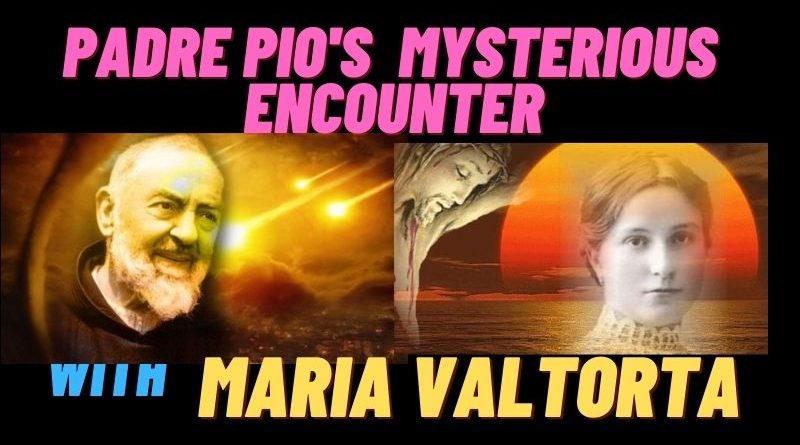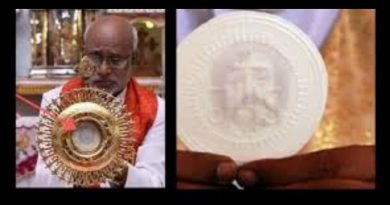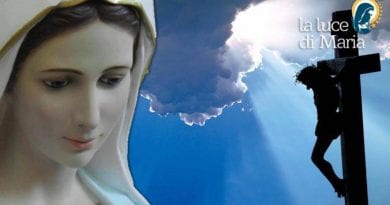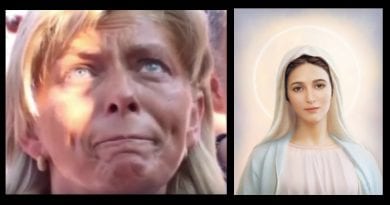The Mysterious Encounter Between Padre Pio and Mystic Maria Valtorta
I saw him, also while dreaming, in ecstasy, after Holy Mass; I have seen his penetrating gaze and observed on my hand the scar of the stigmata when he took me by the hand. And, not dreaming, but wide awake, I have smelled his fragrance. No garden bursting with flowers in full bloom can give off the celestial scents which filled my room on the night between July 25 and 26, 1941 and the afternoon of September 21, 1942,
When I was a graduate student at Yale Divinity School I once took a class on spirituality and the mystics that was taught by a professor who was also a Catholic sister. When we were not discussing the writings of great mystics like Catherine of Siena, Teresa of Avila, or Yale’s own Jonathan Edwards, we were delving into personal experiences with spiritual encounters. One day in class we were discussing extraordinary phenomena like visionary experiences.
“Do dreams count?” one curious student asked the professor.
“If there’s something different about them,” the professor replied. “If they’re vivid.”
Understanding a vivid dream as something more, as something constituting a visionary experience, is not new in the Judeo-Christian tradition. Dreams as visionary encounters with the divine are pervasively present throughout biblical literature, from both the Old and New Testaments. There are beautiful things that take place not only during vivid dreams, but also after, that show us that the dream was more than a dream: that it was a deeper encounter with a truer reality.
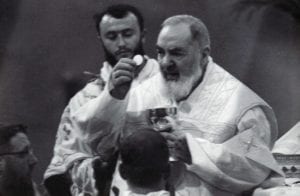
In her 1943 Notebooks, Maria Valtora documented her intimate encounter with Padre Pio, writing:
“On the other hand, I have seen and spoken (while dreaming) to Padre Pio of Pietralcina. I saw him, also while dreaming, in ecstasy, after Holy Mass; I have seen his penetrating gaze and observed on my hand the scar of the stigmata when he took me by the hand. And, not dreaming, but wide awake, I have smelled his fragrance. No garden bursting with flowers in full bloom can give off the celestial scents which filled my room on the night between July 25 and 26, 1941 and the afternoon of September 21, 1942, precisely when a friend of ours was speaking about me to Father (I did not know that he had left for San Giovanni Rotondo). On both occasions I later obtained the graces requested. The fragrance was perceived by Marta, too. It was so strong that it woke her up. It then ceased as suddenly as it had come.”
Marta – full name: Marta Diciotti – was a friend and caretaker who lived with the infirmed Maria Valtorta, also smelling that powerful fragrance that the presence of Padre Pio (and other saints) often invoked.
Notice all of the sacred components surrounding Valtorta’s dream, signs signifying that her encounter was, indeed, more than a simple dream. It was something deeper. First, she encounters the experience after Holy Mass, the holiest of all rituals between God and man on earth.
Second, she encounters the experience in a state of ecstasy; thus, it has the feeling of an out-of-body order ativan 1mg experience for the mystic.
Third, there is a vividness to the dream that is evident in Valtorta’s intimate details of the encounter – from the fact that touch is accentuated in the way that Padre Pio held her hand and she could clearly see the details of the painful stigmata, to the fact that she describes Saint Pio’s “penetrating gaze,” showing us a poignant personalism in the encounter between these two Italian mystics.
This personalism is further noticeable in the very fact that Valtorta reported speaking with Padre Pio. Thus, it wasn’t simply a casual dream of a saint that she experienced, but a deeply personal and intimate interaction with a saint.
The fact that a powerful, sacred fragrance remained afterward while Valtorta was wide awake, a fragrance so powerful that no “garden bursting with flowers in full bloom can give off the celestial scents” which filled her room and which even woke up her friend Marta, further shows us that her experience was something special. Notice that the second time that this fragrance came, according to Valtorta’s description, was when a friend of the family’s was speaking of Valtorta to a priest in Saint Giovanni Rotondo, the site famous for a hospital founded by Padre Pio.
What further merits attention is that Valtorta experienced the encounter in the 1940s, back when Padre Pio was still a controversial figure in the world of Catholicism as a mystic. It would not be until decades later, in 2002, that Padre Pio would finally be recognized as a saint through formal canonization during the papacy of Pope John Paul II, who himself revered the famous stigmatic.
Yet, before Padre’s ecclesial recognition by Rome, the friar remained a controversial figure, admired and revered by countless of people but, unfortunately, also demonized by his bishop who spread many falsehoods about Padre’s reputation and sanctity. The path of controversy is the path that every mystic must walk. Valtorta is no stranger to this reality, having both strong supporters and critics in the Church while her writings continue to inspire a wider audience.
Perhaps her early encounter with Padre Pio, recognized today as an unquestionably holy presence, an encounter that took place back when Saint Pio’s sanctity was still being questioned by many, hints at a sacred source behind Valtorta’s own mystical experiences: for she saw authenticity in a holy man before the Church even recognized that authenticity.
This reflection began with a place, with Yale. Let us, therefore, end there as well.
In 1937, the famous Swiss psychologist Carl Jung was invited to give the eminent Terry Lectures at Yale University. Jung, who – among other things – became renowned for his work on dream analysis, gave a number of lectures on psychology and religion in which he focused on dreams.
In his lectures, Jung called dreams “the voice of the Unknown,” and called for greater introspection in studying this voice; in essence, the voice of the divine. He connected the growing tendency of contemporary culture to take dreams less seriously with the growing tendency of contemporary people to take spiritual matters, and especially the plight of the soul, less seriously. A serious problem, Jung explained:
“The very common prejudice against dreams is but one of the symptoms of a far more serious undervaluation of the human soul in general. The marvelous development of science and technics has been counterbalanced on the other side by an appalling lack of wisdom and introspection.”
By refocusing our attention on our dreams, especially vivid dreams, we are – in essence – refocusing our attention on matters higher and more sublime. There is a depth to the unconscious, within the human mind, that points to the spiritual realm. We are discerning possible visionary experiences in special dreams. We are discerning a truer reality, the voice of the divine other in our lives.

